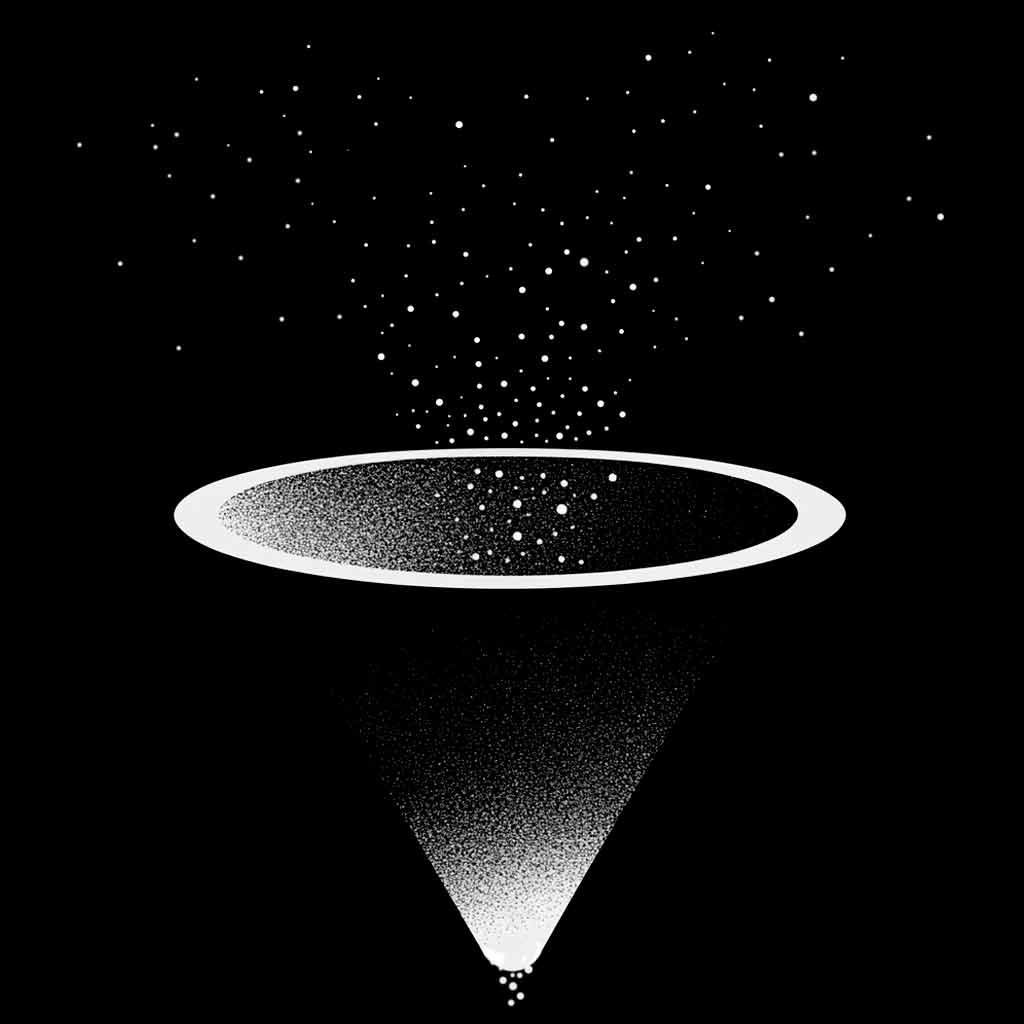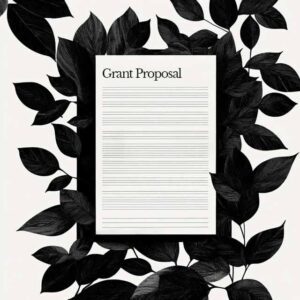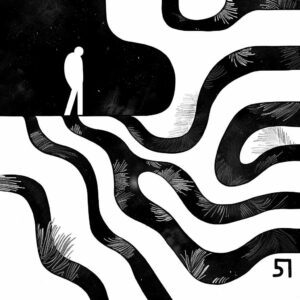Understanding the Marketing Funnel
A marketing funnel is a visual representation of the customer’s journey from awareness to purchase. It helps businesses understand and guide potential customers through different stages, ultimately converting them into loyal clients. The funnel metaphor illustrates how a large number of potential leads are gradually narrowed down to a smaller group of actual buyers.
Creating a marketing funnel allows businesses to systematically nurture leads, build relationships, and increase conversions. By understanding each stage of the funnel, businesses can tailor their marketing strategies to effectively engage with customers at different points in their journey. This focused approach improves efficiency and effectiveness in marketing efforts, ultimately boosting sales and customer retention.
Generate a Custom Marketing Funnel
This focused approach improves efficiency and effectiveness in marketing efforts, ultimately boosting sales and customer retention.
Essential Parts of the Funnel
A typical marketing funnel has several key stages:
- Awareness: At the top of the funnel, potential customers become aware of your brand or product.
- Interest: Leads show interest by engaging with your content or exploring your offerings.
- Consideration: Prospects evaluate whether your product or service meets their needs.
- Intent: Leads demonstrate a clear intent to purchase.
- Purchase: The lead becomes a customer by making a purchase.
- Loyalty: Post-purchase, efforts focus on retaining the customer and encouraging repeat business.
Different Structures of a Marketing Funnel
While the traditional funnel follows the AIDA model, there are variations to fit specific business needs. Some funnels incorporate additional stages such as loyalty and advocacy, emphasizing long-term customer relationships. Others might simplify the process to better align with shorter sales cycles.
Activities at the Top and Bottom of the Funnel
At the top of the funnel, the focus is on attracting a wide audience through activities like content marketing, social media, and SEO. This stage aims to generate awareness and interest. At the bottom of the funnel, efforts concentrate on converting prospects into customers. This involves targeted strategies like personalized email campaigns, product demos, and special offers.
Industry-Specific Funnel Approaches
Different industries may adapt their funnel strategies to match their unique customer behaviors and sales cycles. For instance, a B2B company might have a longer, more detailed funnel with multiple touchpoints, while a B2C e-commerce business might have a shorter, more direct funnel focusing on quick conversions.
Planning and Building a Marketing Funnel
Building an effective marketing funnel involves careful planning and execution. This guide will walk you through the essential steps, providing practical examples to help you understand and implement each stage.
1. Define Your Goal
What do you want to achieve with your funnel? Before you start building your funnel, it’s crucial to identify your primary objective. Your goal will shape the entire structure and strategy of your funnel. Common goals include:
- Increased Sales: If your main aim is to boost sales, your funnel should focus on guiding potential customers through the decision-making process to purchase.
- Lead Generation: If generating leads is your goal, your funnel should aim to collect contact information from prospects who are interested in your product or service.
- Brand Awareness: For businesses looking to increase brand awareness, the funnel should concentrate on reaching a wider audience and educating them about your brand.
Example: A SaaS company may want to increase sales by converting free trial users into paying customers. This goal will drive the creation of a funnel that emphasizes showcasing the product’s benefits and encouraging upgrades.
2. Identify Your Target Audience
Who are your ideal customers? What are their pain points and needs? Understanding your target audience is fundamental to building a successful funnel. You need to know who your potential customers are, what challenges they face, and how your product or service can solve their problems. This involves:
- Demographic Information: Age, gender, location, income, etc.
- Psychographic Information: Interests, values, lifestyle, etc.
- Behavioral Data: Purchase history, brand interactions, etc.
Example: If you sell eco-friendly household products, your target audience might include environmentally conscious consumers who prioritize sustainability. Understanding this, you can tailor your marketing messages to highlight the eco-friendly benefits of your products.
3. Map Out the Customer Journey
Outline the stages your customers go through from awareness to purchase. Mapping out the customer journey helps you visualize how prospects move through your funnel. Typical stages include:
- Awareness: Prospects learn about your brand or product.
- Interest: They show interest by engaging with your content.
- Consideration: They evaluate whether your product meets their needs.
- Intent: They show intent to purchase.
- Purchase: They complete the purchase.
- Loyalty: They become repeat customers and advocates for your brand.
Example: A fitness trainer offering online courses might outline the journey as follows: potential clients discover the courses through social media ads (awareness), visit the website to learn more (interest), sign up for a free webinar (consideration), receive follow-up emails (intent), enroll in a course (purchase), and join a membership program for ongoing training (loyalty).
4. Create Relevant Content
Develop content that addresses the needs and questions of your audience at each stage. Content is the backbone of your marketing funnel. Each piece of content should be tailored to the specific stage of the customer journey it targets:
- Awareness Stage: Blog posts, social media updates, and videos to attract attention.
- Interest Stage: E-books, webinars, and case studies to educate and engage.
- Consideration Stage: Product comparisons, testimonials, and demos to build trust.
- Intent Stage: Discounts, free trials, and personalized offers to encourage action.
- Purchase Stage: Seamless checkout process and clear calls-to-action.
- Loyalty Stage: Follow-up emails, exclusive offers, and customer support to foster loyalty.
Example: A company selling skincare products might create blog posts about common skin problems (awareness), offer a free guide on choosing the right products (interest), share customer testimonials (consideration), provide a discount on first-time purchases (intent), ensure a smooth online shopping experience (purchase), and send personalized skincare tips to repeat customers (loyalty).
5. Choose Appropriate Channels
Select the marketing channels that best reach your target audience at each stage. Different channels work better for different stages of the funnel. You need to choose the right mix to effectively reach and engage your audience:
- Awareness: Social media, SEO, paid ads, content marketing.
- Interest: Email marketing, webinars, educational content.
- Consideration: Retargeting ads, comparison tools, detailed product pages.
- Intent: Direct emails, special offers, free trials.
- Purchase: User-friendly website, clear CTAs, secure checkout.
- Loyalty: Email newsletters, loyalty programs, customer surveys.
Example: An online clothing store might use Instagram ads to drive awareness, send out style guides via email to build interest, provide detailed size and fit guides on their website for consideration, offer first-time shopper discounts to drive intent, ensure a seamless online purchase process, and create a loyalty program for repeat customers.
6. Measure and Optimize
Continuously analyze the performance of your funnel and make adjustments to improve conversion rates. Regularly tracking and analyzing your funnel’s performance is essential for optimization. Key metrics to monitor include:
- Conversion Rates: The percentage of prospects who move from one stage to the next.
- Engagement Rates: How actively prospects are interacting with your content.
- Bounce Rates: The percentage of visitors who leave your site after viewing only one page.
- Customer Acquisition Cost (CAC): The total cost of acquiring a new customer.
- Customer Lifetime Value (CLV): The total revenue a customer is expected to generate during their relationship with your business.
Example: If you notice a high bounce rate at the consideration stage, you might improve your product pages by adding more detailed descriptions, better images, or customer reviews. If conversion rates are low at the intent stage, you might test different types of offers or follow-up strategies.
By understanding the marketing funnel and carefully planning each stage, you can create a powerful tool to attract, engage, and convert customers, driving growth for your business.









